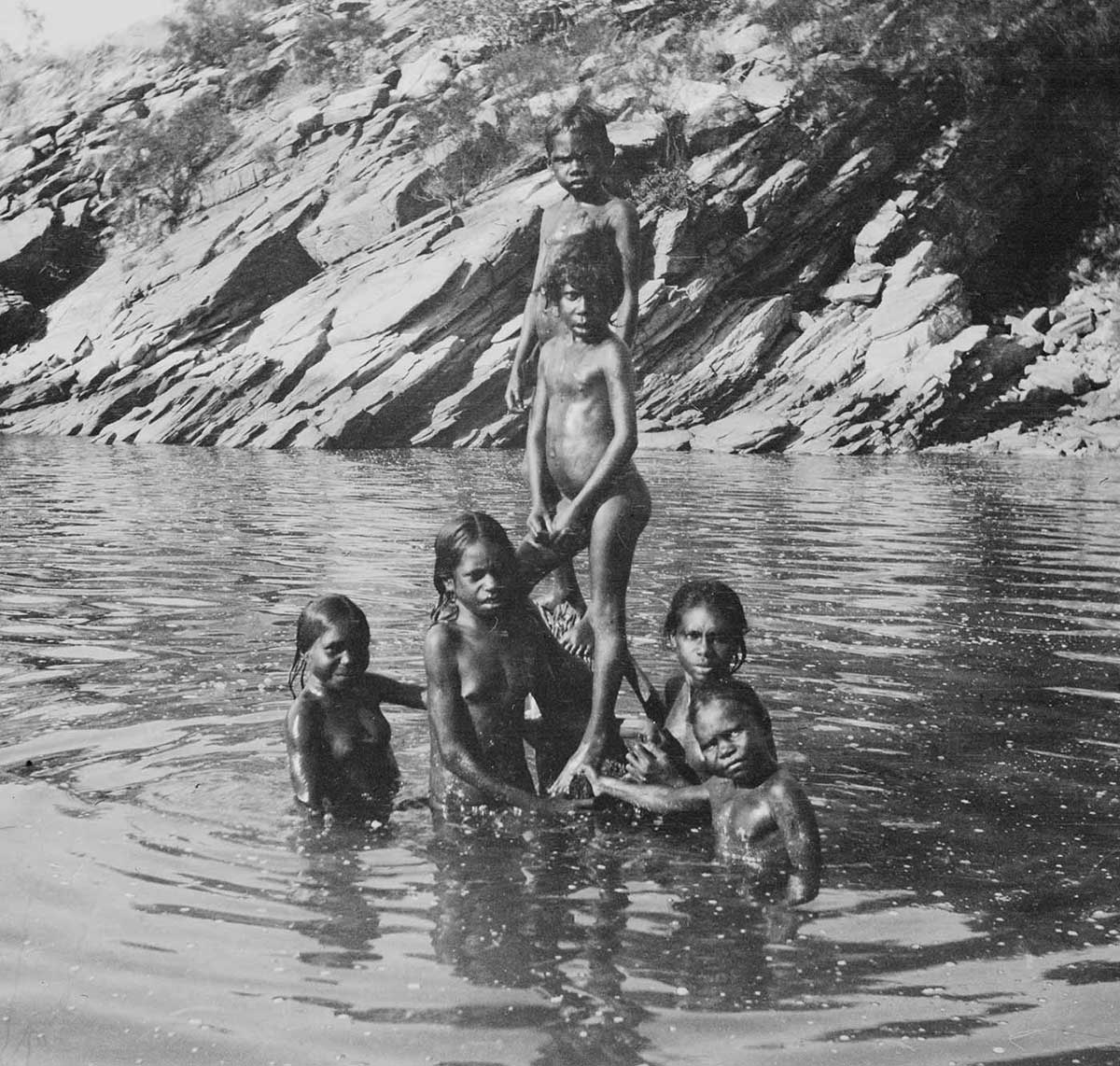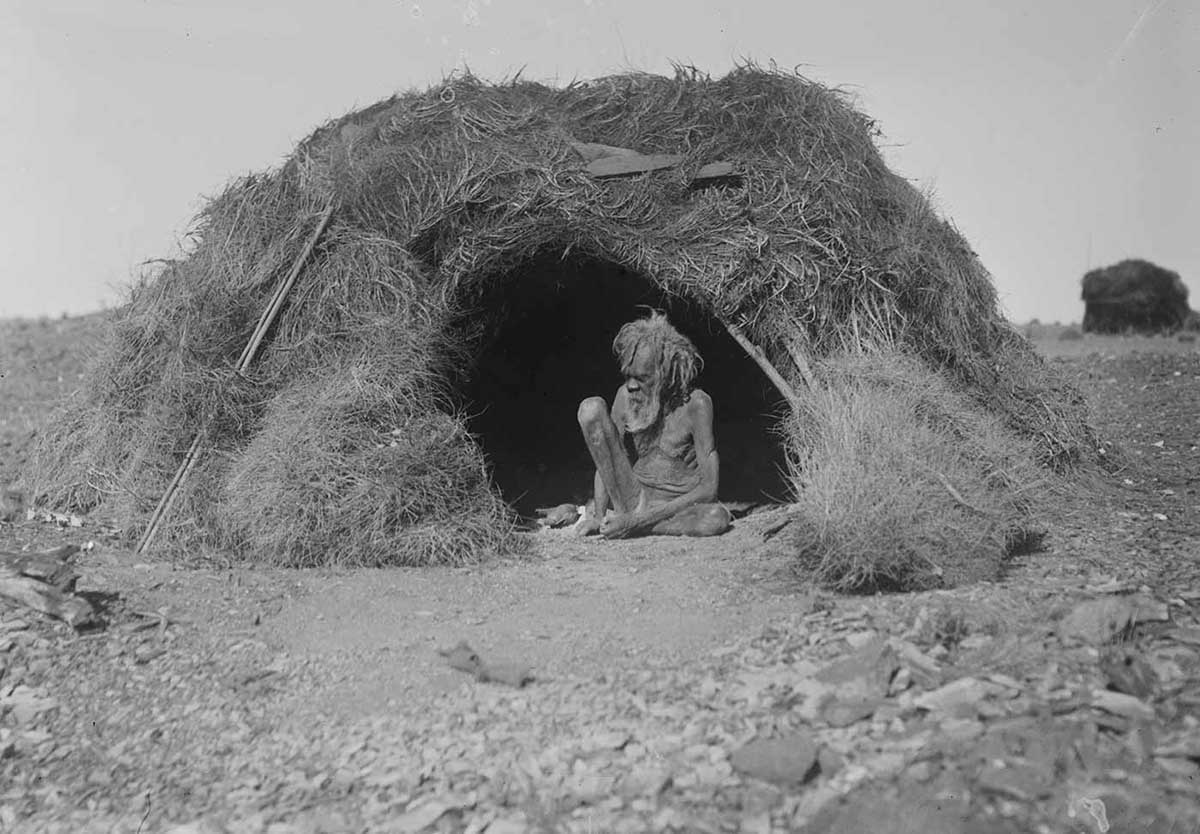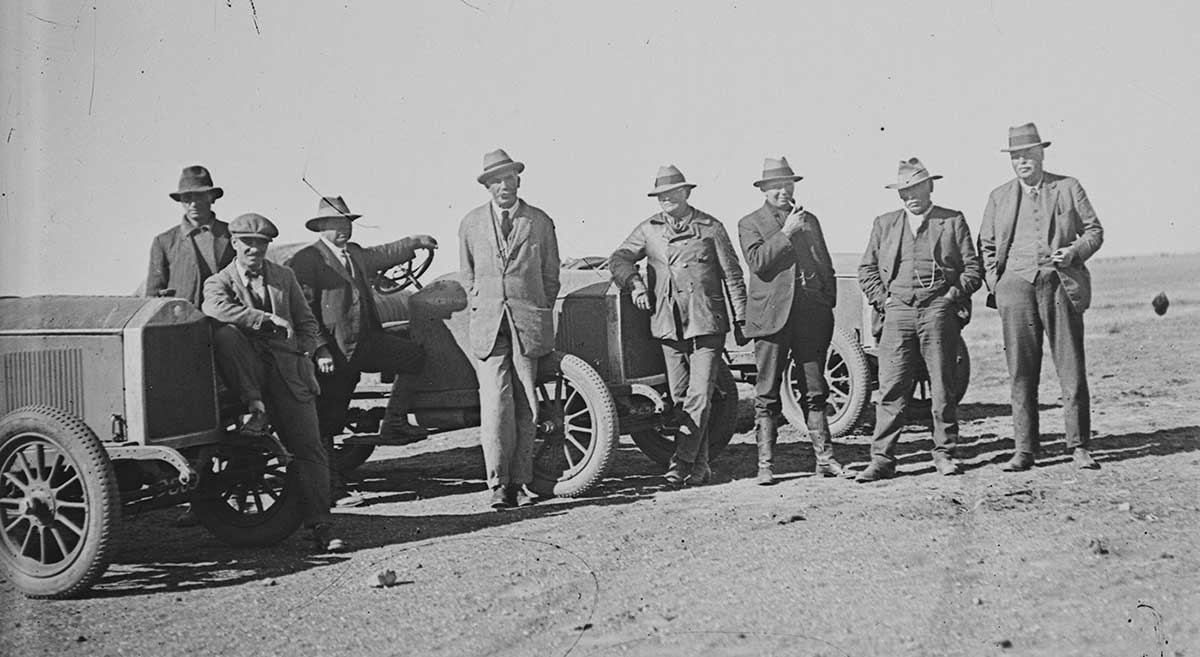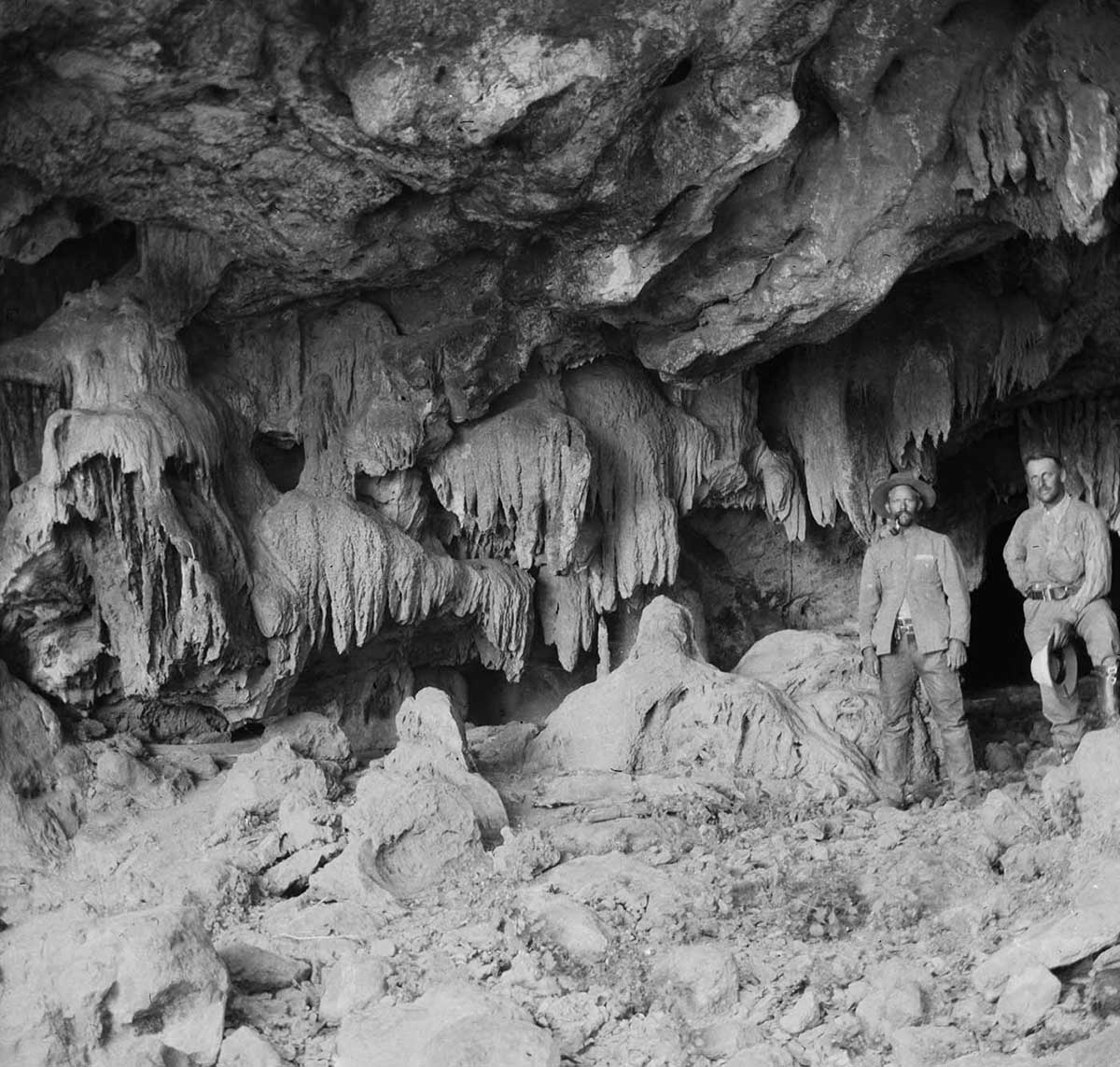A Different Time: The Expedition Photographs of Herbert Basedow 1903–1928 showcased one of the Museum's little-known treasures – photographs taken by Dr Herbert Basedow mostly in central and northern Australia between, as the title suggests, 1903 and 1928.
Basedow always took a camera with him on his numerous trips into what were then remote areas of Australia. On about half of his trips he used more than one camera and on expeditions in 1916, 1920 and 1922 he used three. On the trips in 1903 and 1926, Basedow had two cameras and both took film negatives. On other expeditions where he had two or more cameras, one camera took glass negatives and the other camera/s took film negatives.
His photographic collection begins with the 1903 Government North-West Prospecting Expedition into the far north-west of South Australia and the Northern Territory. On this expedition he took two Kodak cameras, one that took square negatives and the other was a panorama camera.

Basedow's next expedition, in 1905, investigated the geology of the coastline between Port Essington and the mouth of the Victoria River, and from Darwin south to Katherine, with South Australia's Government Geologist, HYL Brown.
Unfortunately, the Museum only has a few photographs from this expedition. Basedow was later based in Darwin for a short period in 1911, when he took a small number of photographs.
Between 1905 and 1907 Basedow made a number of short visits to the Flinders Ranges, again undertaking geological investigations. On the first he came across Aboriginal rock engravings which he continued to document on subsequent trips.
Between April 1907 and July 1910 Basedow undertook postgraduate studies in Europe. After returning, he continued investigating rock engravings in the Flinders Ranges and in 1914 published his findings. This was one of many articles, as well as two books, that Basedow published on Aboriginal cultures between 1904 and 1935. He also published articles on geology and zoology.
Basedow undertook further expeditions in search of mineral deposits; to the Kimberley in 1916 and the Victoria River district in 1922. His other major expeditions were to report on the health of South Australia's Aboriginal people in the state's settled districts and the south of the Northern Territory in 1919 and 1920, a vice-regal trip to central Australia in 1923, and two trips funded by wealthy grazier Donald Mackay into central Australia in 1926 and Arnhem Land in 1928.
A Different Time examined all of these trips through Basedow's photographs and some of the objects he collected. The exhibition also considered the technology of Basedow's photography and his work as a scientist, and provided an insight into the man himself.
Map of expeditions
- Download Expeditions between 1903–192870.8 kb pdf [ PDF | 70.8 kb ]


